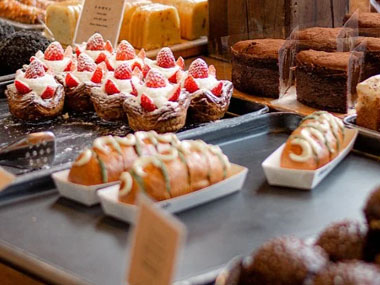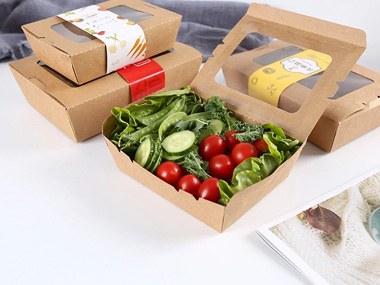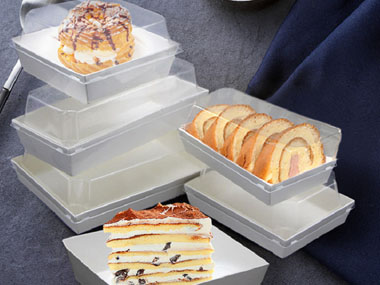Food packaging is something that everyone is familiar with. Modern life is full of processed foods and packaging technology plays an important role in food safety by preserving foods and extending their shelf life.
If you observe your own grocery shop trips, you will find that almost all the processed food you take home is packaged.
In this article, you will learn more about food packaging technology.
So let's delve into the interesting world of food packaging.

What is food packaging?
Food packaging refers to the way in which food is packaged, the materials used and the technology used to achieve it.
The packaging of food has a variety of uses, such as extending the shelf life of items. But food packaging is not a modern science. In fact, its history may surprise you.
Custom Disposable Cookie Sushi Cake Box
Who invented food packaging?
Food packaging has existed in various forms throughout history. According to the Journal of Agricultural and Food Chemistry, Napoleon played an important role in its development by offering a reward of 12,000 francs to the person who invented an effective method of packaging foodstuffs. Napoleon needed a new method to prevent the food of his army from spoiling.
The Journal of Agricultural and Food Chemistry explains that the prize was not awarded until 15 years later when Nicolas Appert came up with the canning method. His process involved boiling the food and sealing it in airtight glass containers, giving birth to the modern canned foods we see in grocery shops.
A brief history of food packaging
The history of food packaging goes back a long way! The Chinese played an important role in the development of paper and wrapping paper for storing food.
In Egypt, development took place in the form of glass blowing and moulding techniques. Glass was shaped into different shapes to store food and water.
Since then, developments have continued to evolve through revolutionaries such as Nicholas Appert. Modern metal cans evolved from Appert's glass 'canning' method, and in the 1880s the food manufacturer Quaker Oats used cardboard cereal boxes to package oats.

Custom Disposable Salad Paper Box with Clear Window Lid
What are the different types of food packaging?
The different types of food packaging include
Aseptic packaging: These provide sterilised food packaging that does not require refrigeration. Aseptic cartons are used for food and beverages such as whole egg liquids, soups, milk, other dairy products etc.
Trays: These are used to store meat, seeds, fish and beverage cans. They have a standard flat shape and high sides to prevent the contents falling out.
Bags: Bagging (putting food into bags) is usually used for snacking on biscuits, chips or packaged fruit.
Boxes: Boxes come in various forms and are used for packaging cereals, frozen foods, pizza, fast food etc.
Custom Disposable Cookie Sushi Cake Box
Cans: Commonly used for beverages or canned foods, they are versatile and have a long shelf life. They are made from thin metal containers coated with tin to avoid corrosion.
Cartons and coated paper: the most common forms of food cartons are egg cartons for eggs and aseptic cartons of different shapes and sizes and coated paper for liquid items such as milk.
Flexible packaging: This uses flexible packaging materials such as plastic sheets, foil or paper. Bagged salads are a common item that is packaged in flexible packaging.
Pallets: Pallets are used for the transport of large quantities of products. Boxes of product are placed and stacked on trays, which are then wrapped to secure and minimise food movement.

Wrappers: these need little explanation. Different processes such as flow wrapping are widely used for confectionery products, such as candy bars or chewing
Contact us today to start customizing drinking straws to your business needs.
Previous: None.
Copyright:@2020-2021
Comments Please sign in or sign up to post.
0
0 of 500 characters used